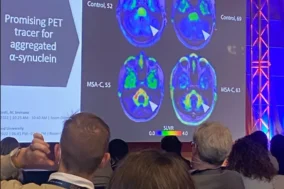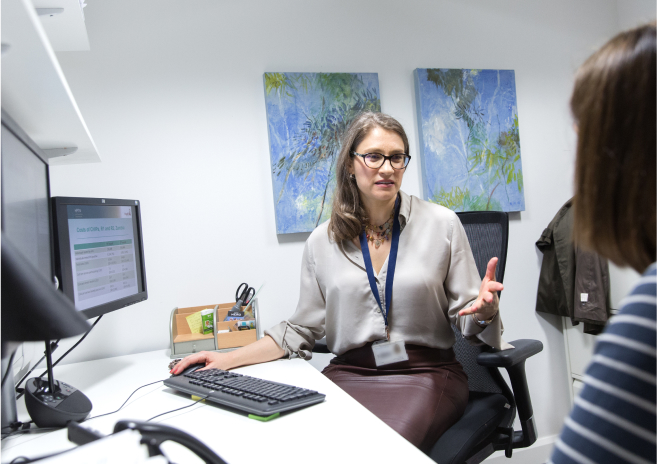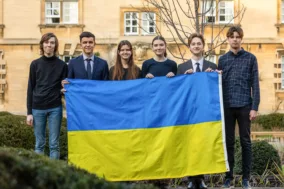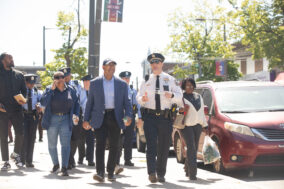Advancing the Prevention and Treatment of COVID-19

- Ken Griffin’s multifaceted response to the COVID-19 pandemic included work in partnership with government, science, business, and philanthropy to accelerate testing, treatment, and prevention capabilities in the U.S. and around the world.
- These efforts contributed to ambitious research initiatives that ultimately led to the widespread roll-out of rapid testing and convalescent plasma therapies, the development of a bio-resource repository and more, and a safe, and effective vaccine at record speed.
Collaboration and philanthropic support are essential to accelerate medical solutions and will be the difference in protecting as many lives as possible.
By March 2020, the world was experiencing a global crisis not seen in over a century. A novel, highly contagious, and frighteningly virulent infectious disease called COVID-19 had brought on a pandemic that raced from Wuhan, China, to the rest of Asia and then, with terrifying speed, to Europe, the Americas, and beyond—bringing serious illness and, in many cases, rapid death to hundreds of thousands of people.
Within just a few weeks, the entire global economy ground to a near halt, as frightened people in lockdowns around the world wondered when life would ever return to normal. It was immediately clear that science was the solution—and that scaling COVID-19 testing, treatment, and prevention capabilities around the world would put us on the path to normality.
With that in mind, Ken Griffin, who had been supporting medical research and innovation for years, partnered with New York City medical institutions at the forefront of the COVID-19 scientific response during the early months of the pandemic.
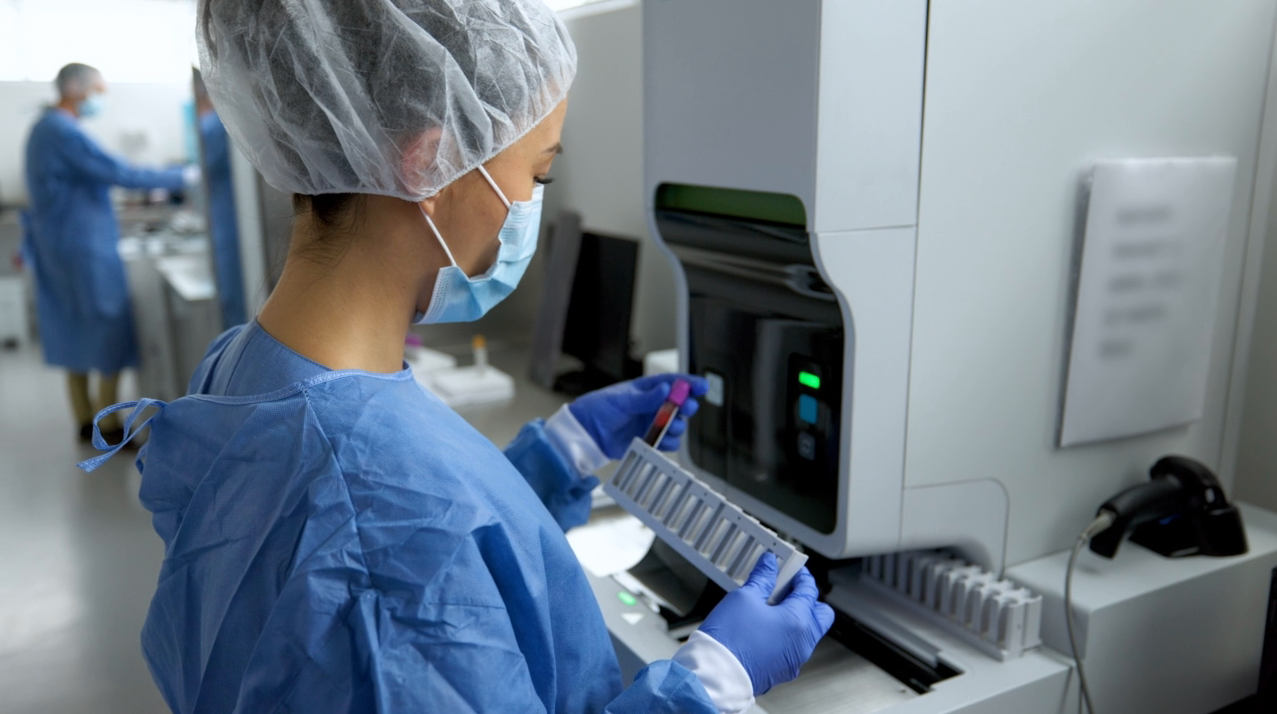
With funding from Griffin, Weill Cornell Medicine accelerated the development of a rapid-response testing program that received emergency use authorization from the U.S. Food and Drug Administration (FDA) and was soon rolled out nationally. The resulting test increased the speed and simplicity of detecting the virus in patient samples and greatly expanded the repertoire of tools available to the public health community at the height of the crisis.
Meanwhile, immunologists and virologists just a few blocks away at The Rockefeller University were investigating therapies to help stop disease progression in the critically ill. Support from Griffin Catalyst advanced the development of effective convalescent plasma therapies for the prevention and treatment of infections. In just five months, the investigators progressed from early studies of COVID-19 patients to the design of innovative testing approaches that ensured the potency of plasma used in medical treatment. According to the university, plasma therapy has saved the lives of more than one hundred thousand COVID-19 patients.
~100,000
Lives saved in the first year of the pandemic, enabled by research funded by Griffin Catalyst
Funding from Griffin Catalyst also progressed antibody work at the Mount Sinai Health System, where a team of microbiologists was working to develop the world’s first antibody test for the virus that causes COVID-19. The test, which remains one of the most accurate in the world, allowed Mount Sinai to launch one of the country’s first and largest convalescent plasma programs to treat COVID-19 patients with antibody-rich plasma from recovered patients and to scale the development and distribution of a test kit now used in clinical laboratories around the globe.
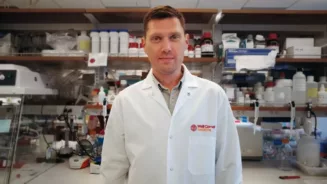
Griffin’s focus also extended to Europe, where two of London’s leading medical institutions were committed to increasing the international scientific community’s understanding of the virus and materially reducing the time and cost of developing and producing a vaccine at scale.
A £2 million donation to the Imperial College London focused on a promising new type of vaccine candidate – which holds promise for other diseases and represents a potentially scalable vaccine platform for the developing world. A separate £1 million donation to Barts Charity enabled Barts Health NHS Trust to create one of the world’s largest bioresource repositories for COVID-19 before, during, and after exposure with health-care workers during London’s early COVID-19 surges. Biosamples collected regularly from a high-exposure population – frontline healthcare workers – enabled researchers to answer critical questions about immune response and risk factors. Importantly, they also informed treatment and vaccine development efforts for scientists in the UK and around the world.
From virology and epidemiology to testing, tracking, and tracing, this multinational, multidisciplinary struggle needs visionary donors like Ken Griffin. Philanthropy is critical in accelerating our efforts to defeat coronavirus.
Contributing to the development of an effective, safe and widely used vaccine like those that had stopped less severe pandemics in the past was a central focus for Griffin—and for Coalition for Epidemic Preparedness Innovations (CEPI), which also received funding. CEPI is focused on advancing access to safe and effective vaccines against emerging infectious diseases and accelerating their research, development, and use when outbreaks strike.
With an approach tailor-made for the challenges wrought by COVID-19, CEPI played a central role in accelerating development of multiple vaccine candidates, making some of the earliest investments in promising approaches and laying the groundwork for the global infrastructure required for delivery around the world.
Operation Warp Speed
Thanks to organizations like CEPI, promising paths toward the vaccine that would be essential to ending the pandemic had emerged, but the timeline of bringing it to market remained daunting.
The fastest any previous vaccine had gone from concept and development to testing, government approval, mass manufacture, distribution, and widespread adoption was four years. Somehow, the well-established process of developing a vaccine and bringing it to market would have to be significantly accelerated.
As the pandemic began to take hold in the United States and the scope of the situation was becoming clear, senior administration officials asked for advice. Griffin championed the idea of early manufacture and production of vaccines and treatments. According to administration officials, this led to the concept of Operation Warp Speed.
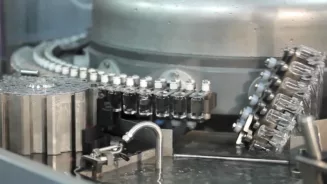
Griffin and others called on the federal government to radically shorten the FDA’s conventional evaluation timeframes from years to months, while still maintaining quality control and safety protocols, and to provide direct aid for part-time or freelance workers and efficient assistance for small businesses to help them survive the once-in-a-century economic crisis posed by the pandemic. They also urged the administration to fund a variety of vaccine development projects simultaneously.
While advanced market commitments—with the government agreeing to pre-purchase the vaccines so that pharmaceutical companies began the manufacturing process even as trials were still underway—are commonplace in other financial and commercial endeavors, they had rarely been employed by the federal government.
But this time they were.
By August 2020, eight companies were selected to receive $11 billion in public and private support to research, develop, and manufacture vaccines to achieve Operation Warp Speed’s audacious goal of producing and delivering 300 million doses of a safe and effective vaccine by January 2021.
Stunning even the most optimistic experts, two pharmaceutical companies—Pfizer in the United States and Moderna in Europe—announced in November 2020, six months after Operation Warp Speed had begun, that they had successfully produced safe and effective vaccines at scale, had received emergency use authorization by the FDA, and would begin distributing their products for free in early January. After nearly a year of uncertainty and anxiety, there was now a light at the end of the tunnel—and a return to normality was in sight.
213
Days from announcement of Operation Warp Speed to the first COVID-19 vaccine outside of clinical trials
300M
Doses of vaccines distributed as result of CEPI’s early investment in preclinical work and manufacturing scale–up
